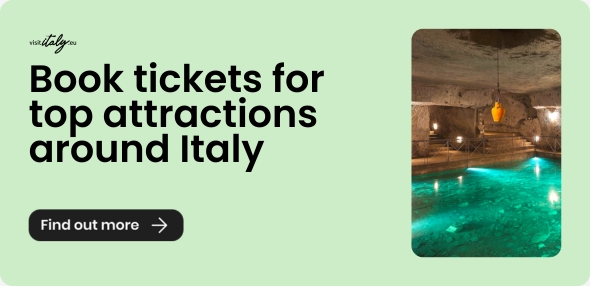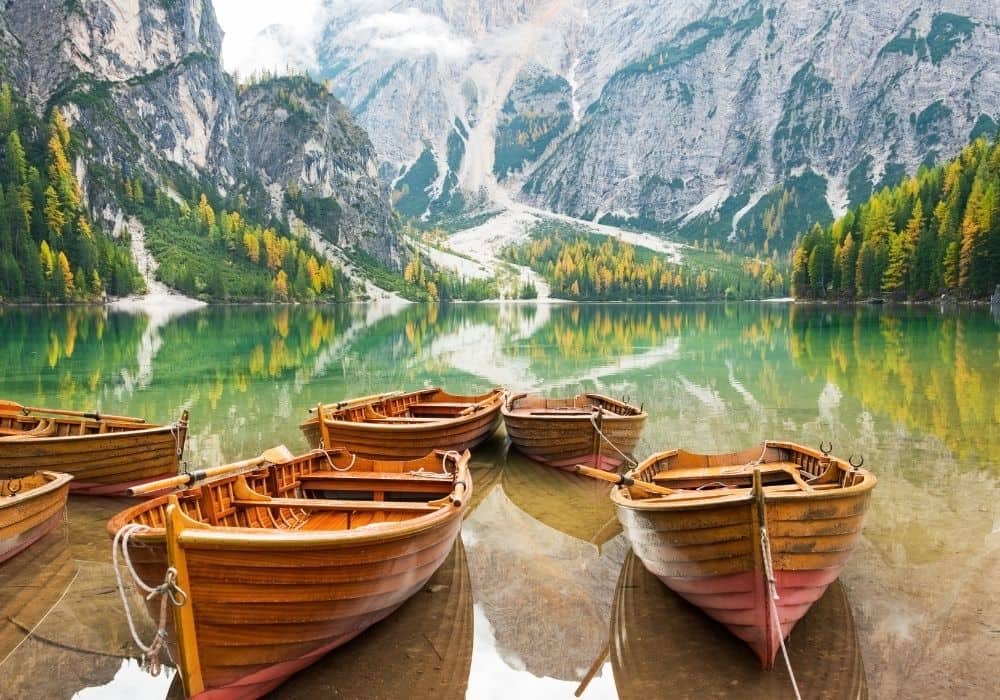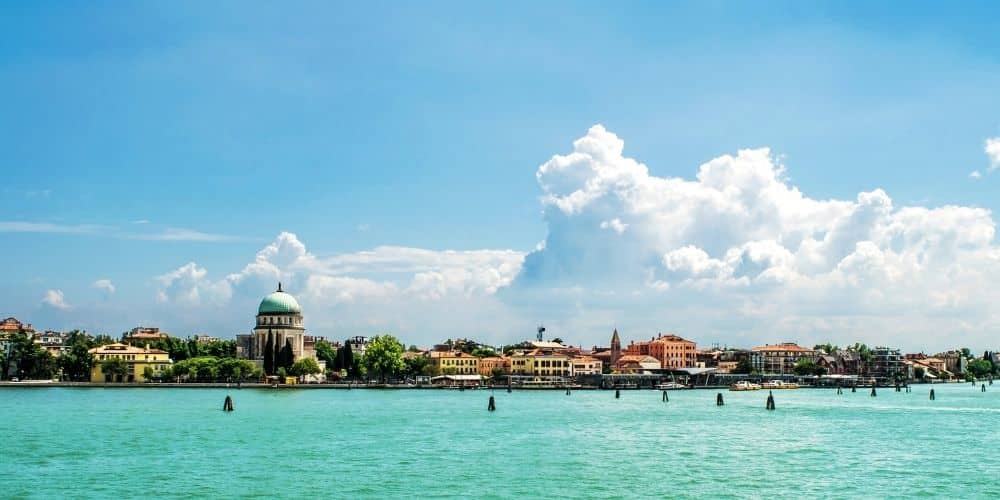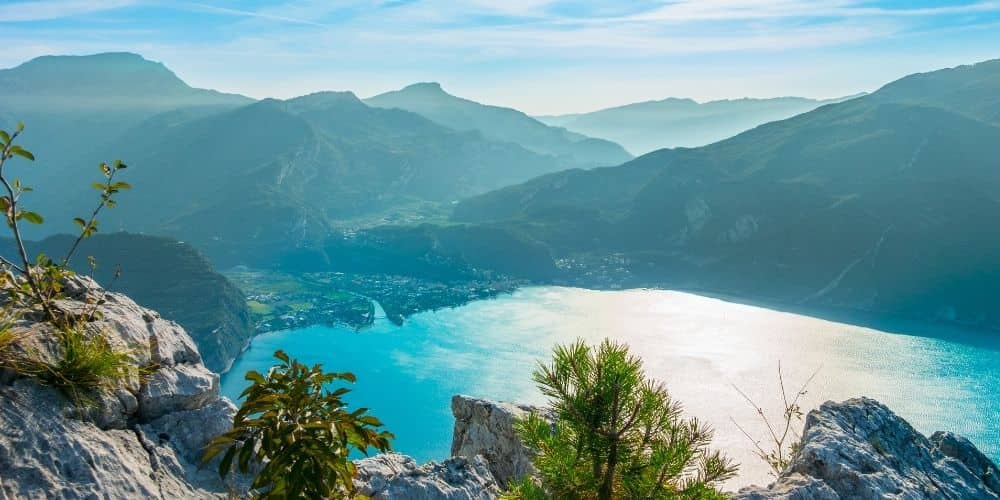Car travel from Germany to Italy on a very spectacular route
From southern Germany, especially Bavaria, but also from Austria, South Tyrol and northern Italy are just a stone's throw away. If you choose a holiday by car, the motorway journey is very comfortable and convenient. By using the Telepass service, we will have the advantage of avoiding annoying queues at the toll gates and we will lose not even a minute. First of all, travelling by car gives us the freedom to change our itinerary even at the last moment, inspired by the charm of a landscape or a particularly suggestive view. Taking advantage of refuelling or refreshment stops, you can plan a few small detours around your route to make the most of the beauty around you. Moreover, the autonomy of travelling by car is also synonymous with safety, especially in the wake of the covid-19 pandemic, but above all with "living slow", without any hurry, to enjoy the route in a regenerating way and, why not, following the rhythms of nature.
So, you can wait for the sunset or for a particular light at a certain time of the day, which is impossible if you are bound by train, bus or plane schedules. The itinerary we propose is varied and interesting and combines the charm of the lake, the mountains, the sea and the villages, crossing three regions of northern Italy: Trentino-Alto Adige, Veneto and Lombardy. Lake Braies, the Dolomites, Verona, Lido di Venezia, Lake Garda and, finally, Lake Como. A unique adventure during which nature, enchanting landscapes, history, culture and gastronomy come together to give you an unforgettable holiday.
Visit Italy recommends the European Telepass, the best solution to travel fast and safely. You can buy it through Maut1 and use it for as long as you need. Having a European Telepass does not only mean that you can skip the motorway toll, but also that you are entitled to many other services. One example? Access to subsidised car parks - very useful if you decide to visit a large city, for example - but also the Messina Strait ferry, which allows you to skip the queue at the ticket office and arrive in Sicily in the blink of an eye.
And finally, remember that with the European Telepass, you can also travel worry-free to France, Spain and Portugal and have over 600 car parks at your disposal.
BOOK YOUR EUROPEAN TELEPASS
1. The fairytale atmosphere of Lake Braies

This enchanting alpine lake is located in Trentino-Alto Adige and exactly in the province of Bolzano, from which it is about 97 km away. At an altitude of 1496 metres, it is located in the Fanes-Senes-Braies Nature Park in the valley bearing the same name. With its characteristic colour between emerald green and turquoise, the picturesque lake is framed by the peaks of the Dolomites and luxuriant fir woods. It is a popular destination all year round for those who love peace and quiet, but above all for keen climbers, hikers or cyclists. Lake Braies will not disappoint you, thanks to its magical power to relax and unwind after a day in the mountains and its ability to amaze you with breathtaking views.
With a surface area of approximately 31 hectares, a length of 1.2 km and a width of a perimeter of 3.05 km, the natural lake is called a barrage lake because the landslide that broke away from Sasso del Signore literally blocked the course of the stream named Braies. You can enjoy a regenerating boat trip or a walk along the path around the lake. Particularly striking, the mountains of the Dodici Apostoli (or Twelve Apostles) and the famous Croda del Becco (in Ladin "Sass dla Porta" and "Torberg" in German). The latter is shrouded in mystery and legend. It seems, in fact, that the lake was once the door (Tor) to the underground kingdom of the Fanes.
Made famous by the RAI TV (Italian national public broadcasting company) series "A un passo dal cielo", this spectacular scenery has attracted crowds of tourists. This has forced the South Tyrolean administration to take measures to curb the phenomenon of so-called overtourism. In order to protect the ecosystem and the beauty of this protected place, during the period from 10 July to 10 September 2021 from 9:30 a.m. to 4 p.m., access to the Braie Valley will only be possible by public transport, on foot, by bicycle, with a valid parking or transit permit reservation or, finally, by shuttle service with compulsory online reservation. Don't miss the lovely little church dedicated to the Virgin Mary overlooking the lake where Archduke Franz Ferdinand and his wife are said to have stopped to pray before being murdered. In addition, at the beginning of May 1945, the most famous prisoners that Hitler had hidden in the municipality of Braies were released.
2. The enchanting Dolomites

The Dolomites, a true masterpiece of Mother Nature, are a series of mountain groups in the eastern Italian Alps. Their name derives from dolomite rock - or rather from the French naturalist Déodat de Dolomieu who studied its composition - a rock consisting mainly of dolomite. This kind of mineral gives them their particularly pale appearance and that makes them even more striking at sunrise and sunset, colouring them red. Thanks to their geological, geomorphological and landscape characteristics, which are truly unique in the world, they were included among the Natural World Heritage Sites in 2009. They are almost entirely located in Italy, between the regions of Veneto, Trentino-Alto Adige and Friuli-Venezia Giulia (more precisely shared between the provinces of Belluno, Bolzano, Trento, Udine, Pordenone, Vicenza and Verona), while a small part is located in Austria (Lienz Dolomites).
Crystal-clear lakes, picturesque villages and unspoilt nature, unique landscapes capable of enchanting anyone who visits them. Wooden houses with balconies overflowing with flowers and well-tended, with characteristic pointed roofs to prevent the accumulation of snow. Among the most famous hamlets: Aldino-Redagno, Alpe di Siusi, Bressanone, Brunico, Cortina d'Ampezzo, Corvara in Badia, Dobbiaco, Fiè allo Sciliar, Ortisei, San Candido, Tires al Catinaccio, Valle di Braies and Villa Bassa.
In addition to the classic walks along the mountain paths, there are endless possibilities for those who love to practice the most varied sports: mountain biking, climbing or the special forest bathing.
Finally, the Dolomites is synonymous with specialities and typical dishes for refined palates, typical of the Alpine tradition. Starting with canederli, a type of very large bread and egg dumplings flavoured with vegetables or meat and served with melted butter or broth. There is also speck, salami, ham, sausages, cheese and the delicious strudel. A rich, hearty, protein-rich cuisine, particularly suited to the mountain climate and lifestyle.
3. Verona, the city of Love

Although it is the second most important city in the Veneto region, Verona is in no way overshadowed by the beauty of Queen Venice from which it is about 120 km away. It borders to the north with the Province of Trento and to the south-west with Lombardy and stands on the bend of the river Adige on which there are many bridges. Notoriously known as the city of love because of the famous Shakespeare's tragedy, Romeo and Juliet, the city also offers a wide range of possibilities to choose from. Suggestive and particular the historical center with beautiful buildings, declared Unesco Heritage for its architectural and urban planning. The vibrant heart of Verona is Piazza Bra, with the symbol of the city, the Arena, at its center. Capable of accommodating up to 20 thousand spectators, it is the third largest amphitheater after the Colosseum and the Amphitheater of Capua. It hosts numerous events including concerts and operas, the most famous of which is the Opera Festival.
A few steps from Piazza Bra and the Arena, the central Via Mazzini hosts severals ancient buildings and beautiful shops. Not to be missed is Juliet's House. Even before entering the courtyard, your attention will be captured by the walls literally covered with tickets and love letters left here by visitors from all over the world. Here, the balcony from which Juliet overlooked is very famous. Not far from Piazza delle Erbe, in the historic center, we can admire Porta Borsari, the entrance to the city dating back to Roman times (I sec. BC). Along Via Roma, on the banks of the river Adige, we can appreciate Castelvecchio, built in the fourteenth century at the behest of Cangrande II della Scala. In addition to taking you back to the Middle Ages, the castle is also home to the Civic Museum of Verona.
The Cathedral of Verona, on the other hand, almost seems to peep out between the buildings and stretches towards the sky. Gothic and Renaissance elements were added to its original Romanesque structure over the course of time. Inside, there is the Pala dell'Assunta by the Venetian Painter Tiziano (in English known as Titian), really worthy of being admired.
And again, the Theatre of Verona, dating back to the first century BC and recovered in the nineteenth, which every year in summer is home to a Festivals dedicated to Shakespeare's theatre. Another symbol of Verona, the Ponte Scaligero is a bridge rising in the close proximity to Castelvecchio. It is a very panoramic point, ideal for immortalizing the memories of your passage in the Venetian city. You can take very original photos through the openings of the loopholes, especially at sunset! The bridge was destroyed by the Germans during the Second World War, but was rebuilt with the remains of stones recovered in the river.
Each epoch has left its mark and numerous places and treasures to show visitors in a romantic and charming atmosphere.
4. The enchanting Lido di Venezia

Venice Lido consists of a small, thin island that stretches for about 12 km between the Adriatic Sea and the Venice Lagoon. The connection between it and the city is provided by regular vaporettos in just a few minutes. Contrary to what you might think, Venice is not only art and culture. In fact, the city also offers beaches and sea, with a seabed that sinks little by little, in a very gradual way and, for this reason, particularly suitable for children. Protected above all by the two dams of S. Nicolò and Alberoni, but also by the numerous smaller dams.
There are free beaches such as the sand dunes of San Nicolò and Alberoni, the Murazzi rocks and the Bluemoon beach, or private establishments for those who prefer a more private, exclusive environment with every comfort. In particular, the Alberoni beach, part of a WWF protected oasis, is very wide and has a wild and unspoilt character. It is the habitat of numerous sea birds, including the classic and common seagulls, little egrets, bee-eaters and Kentish plovers. It is the ideal place to satisfy all your needs for relaxation on fine golden sand and in clean, temperate and calm waters. For children's delight of, there is a particularly abundant supply of shells on the beach, as well as crabs and hermit crabs. The Lido is a unique place, full of charm, with suggestive views and equipped with numerous accommodation facilities and typical restaurants where you can enjoy delicious dishes. It is no coincidence that the Italian director and screenwriter Luchino Visconti loved to retire here to draw the necessary energy and find the right concentration for his films. In this regard, it is worth mentioning the Mostra Internazionale d'Arte Cinematografica -or Venice International Film Festival- the oldest film festival in the world, a world-class event that takes place every year in the special setting of the Venice Lido. The 2021 edition of the Festival will take place from 1 to 11 September.
5. Lake Garda, the largest in Italy

Travelling for about 177 km from Lido di Venezia, you reach Lake Garda also called Benaco, which geographically belongs to three regions: Lombardy (province of Brescia), Veneto (province of Verona) and Trentino-Alto Adige (province of Trento). Largest Italian lake with its 370 km2 of surface, it is a tourist destination that attracts huge flows of visitors. Already in Roman times, on the shores of the lake you could admire sumptuous villas designed for the nobles for their leisure and recreation. in fact, it boasts and not by chance, exceptional admirers such as the Roman poet Catullus who had a house on these shores or Dante Alighieri who mentions it in the XX Canto of the Inferno. For example, in Sirmione, with its sulphurous thermal springs, there are the remains of a Roman villa called Grotte di Catullo (Grottoes of Catullus). Here, with its beneficial properties, the water gushes out from the depths of the lake to regain well-being and psychophysical balance.
No doubt, in addition to Sirmione, among the places that overlook it certainly worthy of being visited are: Desenzano del Garda, Peschiera del Garda, Malcesine, Limone, Salò, Torbole, Bardolino and Riva. For nature lovers, there are endless possibilities offered by a territory that is a real open-air gym. Sailing, windsurfing, hiking, horseback riding, golf, mountain biking, free climbing, golf, kite surfing, canyoning, diving, paragliding ... there is something for everyone.
On top of that, lovers of history and art will not be disappointed either. From delightful medieval villages, castles Veronese or Venetian style, villas and historic residences residences of sovereigns who were the scene of important historical events. Palazzo Bettoni, dating back to the 17th century, is one of the most spectacular villas in the Lake Garda area. Another "piece" of history not to be missed is definitely the Vittoriale degli Italiani (literally in English, The shrine of Italian victories) a sort of monumental citadel designed by the Italian poet Gabriele D'Annunzio and built in 1921 in Gadone Riviera with the collaboration of the Italian architect Gian Carlo Maroni. This singular complex of buildings, streets, squares, gardens, parks, theaters and even waterways was intended to remember the exploits of the "poet-soldier" and the Italians during the First World War.
Finally, an important place is occupied by wine, food and typical products. Clearly, by looking at three regions with their territorial peculiarities and traditions, we find a wide variety of choices. Extra virgin olive oil, light and delicate, lake fish, but also meat dishes and polenta typical of the peasant tradition. Spectacular are the lemon houses of Alto Garda district that characterize the town of Riva del Garda. Excellent wines to combine with every dish, such as the excellent Lugana, Garda Classico Chiaretto, Bardolino, Bianco di Custoza or the sweet Vin Santo Trentino. In other words, a journey through scents and flavors.
6. The romantic soul of Lake Como

From Lake Garda to Lake Como the shortest route is about 162 km, which can be covered in a little more than two hours, exactly from San Felice del Benaco (Brescia) to Menaggio (Como).
Lake Como, also known as Lario or Lake Lecco, belongs to the two Lombardy municipalities of Como and Lecco. Situated 50 km from Milan between the Po Valley and the Alps, it is not only the deepest lake in Italy but also holds other records: it has a perimeter extension of 170 km and is third in surface area with 145 km² and volume with 23.37 km³. Since the nineteenth century its beauty has been celebrated by writers, poets and musicians such as Stendhal, Byron, Liszt or celebrities such as Napoleon Bonaparte, Emperor Francesco I, Alessandro Manzoni who appreciated the landscapes and the varied nature of its territory, immersed in a context rich in history and culture. Even now it represents one of the favorite destinations of celebrities - Madonna, George Clooney, Sylvester Stallone- for its strong tourist attraction. It is no coincidence that in 2014, the U.S. online newspaper Huffington Post placed it in first place in the ranking of the most beautiful lakes in the world as well as for its particular microclimate also for the beautiful villas and towns that stand on its shores. Worthy of mention are Villa d'Este in Cernobbio, Villa del Balbianello in Lenno, Villa Melzi d'Eril and Villa Serbelloni in Bellagio, as well as Villa Pliniana in Torno, Villa Olmo in Como, Villa Manzoni in Lecco, Palazzo Gallio in Gravedona, Villa Erba, Villa Bernasconi and Villa Allamel in Cernobbio.
The main center is Como that, among other things, also gives its name to the lake with its delightful old town, really fascinating views and many monuments of great interest such as the Duomo, the Basilica of Sant'Abbondio, Palazzo Broletto and the Tempio Voltiano.
Lecco, however, is the city that gives its name to the eastern branch of the lake and is inextricably linked to the work of Alessandro Manzoni's Promessi Sposi. Here, every place inspired the Milanese writer and allows us to relive the events of the famous novel.
The hamlet of Bellagio, which stands on the tip of a promontory that divides the lake into its two branches, offers us suggestive views with its colorful houses, characteristic alleys, ancient churches. It has a very special charm.
The hamlet of Cernobbio also deserves a stop. Famous touristic locality and famous for the presence of numerous villas, it gives us enchanting views of the lake.
Finally, almost unknown to mass tourism, the only island of Lake Como: the Isola Comacina. Formerly a fortified citadel of which we can still admire the remains, stands framed by a lush nature in a context really rich in attractiveness. Here, the ruins of the Romanesque church of Sant'Eufemia are still visible as well as the three Houses for Artists intended to accommodate artists from all over the world in search of inspiration. Although uninhabited, in this small strip of land history, culture, nature, art and archeology mix together creating a truly magical atmosphere.
Telepass: a carefree trip
The Telepass service and Maut1, thanks to the device placed on your car or on any other vehicle, allows us to travel comfortably and without problems. Forget the unnecessary and annoying queues, worrying about cash and, last but not least, possible breakdowns at the toll gates with consequent delays on our schedule! Directly charged to your account or credit card, the toll will be one less thought once we pass through Telepass dedicated gates. But that's not all. Among the advantages offered by Telepass, there is the possibility of paying for parking in affiliated structures, Area C* in Milan and the ferry on the Strait of Messina (between Calabria and Sicily).
*Area C is an area in the historic centre of Milan with access restrictions for certain types of vehicles. It coincides with the limited traffic zone (ZTL) Cerchia dei Bastioni and is delimited by 43 gates with cameras, 7 of which are for the exclusive use of public transport.
About the author
Written on 20/07/2021



Alessandra Festa
From Germany or other countries to Trentino, Veneto and Lombardy for a road trip in complete freedom: lakes, sea, mountains and villages. A complete and varied holiday, suitable for all tastes.